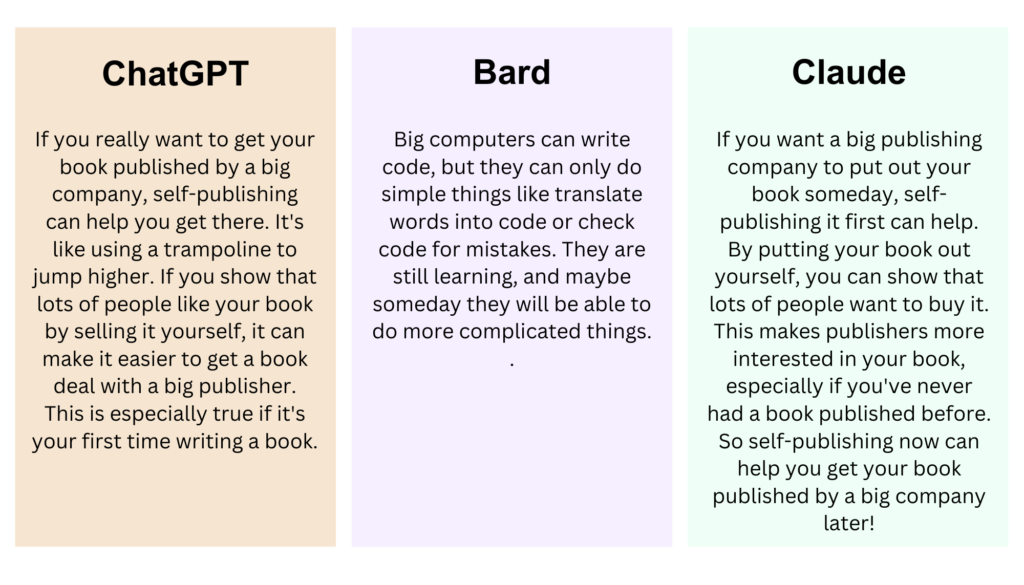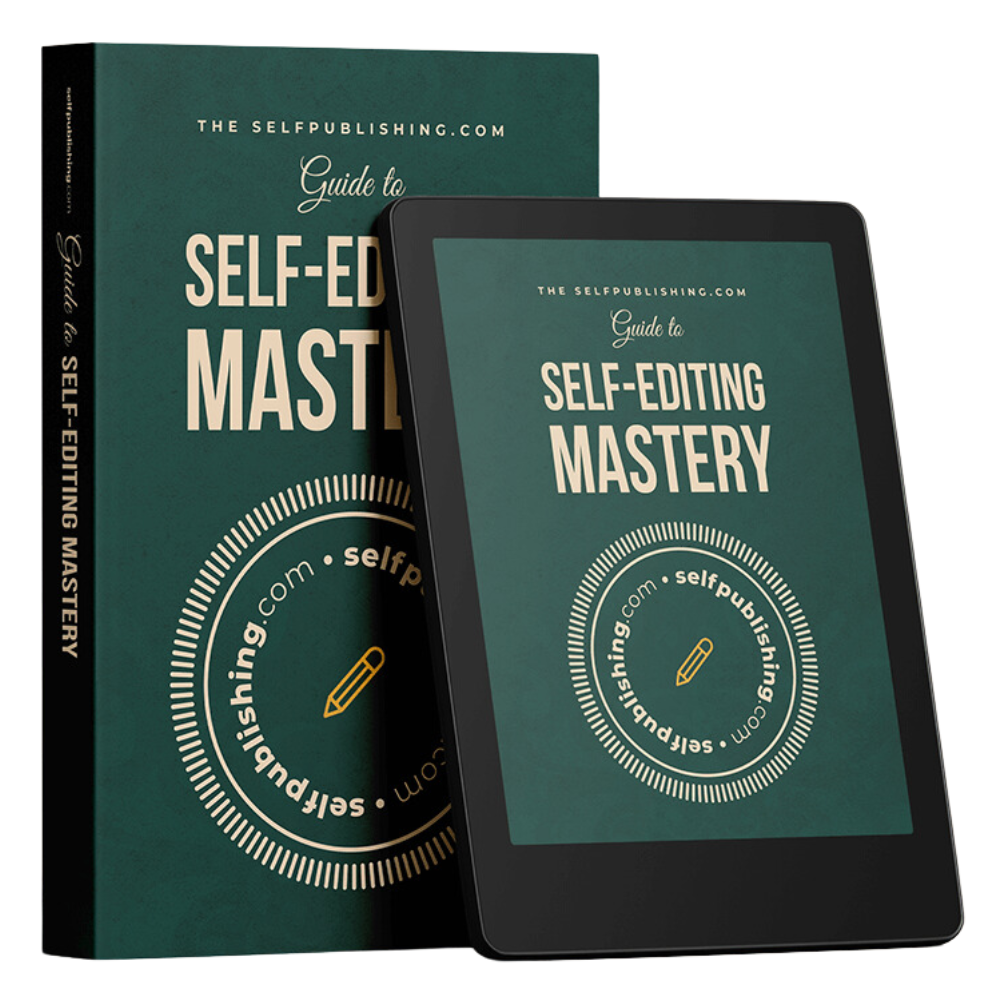Wherever you fall on the writers-using-AI spectrum, most creatives will agree that artificial intelligence has created a seismic shift in how authors write, edit, print, distribute, and market their books.
AI book editors have definitely woven their way into the world of book publishing and continue to spark interesting debates on when, if, and how they should be used.
What are AI book editingtools?
For the uninitiated, AI tools, like AI book editors, are software solutions guided by artificial intelligence and used to enhance productivity. Intuitive language model-based chatbots like ChatGPT have gained popularity in recent years because of their ability to “listen” to requests and provide the appropriate answers.
Everyone from marketers and HR managers to authors and editors has embraced AI as a “second brain.”. At a minimum, AI tools and book writing software can take care of some of the mundane tasks of writing, and on the other end, offer a launching pad for thought and story development.
Although AI tools have been around since the early 1900s, they’ve become more popular in recent years as the technology continues to advance and become more widely available.
What is an AI book editing tool?
In several articles on SP, we’ve mentioned the importance of book editing to create the best possible version of your book. Although we recommend professional editing, self-editing is critical to cleaning up the stray ends of writing. AI book editors offer a variety of features to help authors at every stage of the self-editing process.
Editing software can augment writing by offering grammar suggestions, tone adjustments, and content enhancements to improve clarity and readability. It can also suggest new phrasing and in-depth research as well as support translation and rewrites.
Editing software can improve book writing efficiency in the following areas:
- Inspiration when writer’s block creeps in
- Book outlines for more efficient and clear writing
- Edits for grammar, syntax, spelling
- Storyboarding and character development
- New ways of thinking about the storyline or content
- Translation services
- Access to in-depth research
As AI continues to improve, options for writers will increase, enabling them to write more efficiently and create better books.
How do AI editors work?
Online software tools that are based on large language models (LLMs) allow you to have a “conversation” within a machine learning environment through natural language processing (NLP). With a simple copy/paste prompt, you can start a dialogue with an information database.
Many AI editors are powered by ChatGPT and Bard and Claude are two of its top competitors. To compare the output of the three AI editors, try this experiment using the following snippet of content:
If traditional publishing is your end goal, self-publishing can be a great springboard. Demonstrating your book’s saleability before pitching a publisher or agent can work in your favor, especially if you’re a first-time author.
Open ChatGPT, Bard, and Claude in 3 different tabs and give it the following prompts based on the snippet of content above.
- Edit the following for grammar, syntax, spelling, and clarity.
- Rewrite so a child would understand.
- Rewrite the first answer on a publishing expert level.
Here’s a comparison of the response I received from the second prompt to revise so a child would understand.

It’s interesting how each AI editor interpreted “child”, which led them to particular words and phrasing. Results for the third prompt “to write the answer on an expert level,” offered varied results as well. I also asked for translations in Spanish and received different but less nuanced responses.
The above examples show that each AI online editor has a unique way of responding to the same simple request, but AI-powered tools like these can handle more complex prompts, and the more complex, the more varied the answers will be. AI editors like ChatGPT, Bard, and Claude can connect threads of conversation allowing you to fine-tune your prompts until you get the answer you’re looking for.
Related: Claude.ai vs ChatGPT Review
A list of online AI tools for authors
There’s a large pool of AI tools to choose from, but many are focused on shorter content for business writing. Below is a list of popular AI editor/writing tools that also come with additional features that are especially useful for authors. Best yet, all are either free or offer a trial version.
| AI Editor Tool | Additional Author Benefits |
| Liner | Research, content summaries, |
| Grammarly | Assists with content flow, readability, grammar, and spelling |
| Hemmingway App | Edits for audience reading level. Reduces complex sentences, adverbs, and passive voice |
| Chapterly | Character development, templates, outlines, mind-mapping |
| Wordtune | Offers translation, browser extension, and writing assistant |
| ProWritingAid | Helps with outlines, descriptions, and ideas |
| Rytr | Includes a browser extension and online community |
| Sudowrite | A paraphrasing and headline generator. Helps with descriptions, chapter, and section titles. |
| Quillbot – | A paraphrasing tool that helps with research |
| AI Dungeon – | Helps with character and world development. |
| Sassbook | A paraphrasing and headline generator. Helps with descriptions, chapter and section titles. |
| Novel AI | Customizable AI storyteller with a variety of styles, image generator |
| Ink | Rewriting tool |
| Marlowe | Self-editing tool for fiction and nonfiction that provides AI feedback |
| Jasper | Content generation |
Our top tips, tricks, and prompts for using AI tools
With large language models like ChatGPT, Bard, and Claude, the better your prompts, the more fine-tuned the AI answers will be.
Author Johnathan Green, the best-selling author of ChatGPT Profits: The Blueprint to Becoming a Millionaire with ChatGPT offers the following prompt suggestions when creating an outline for a fiction book:
- Create “guide rails” by being specific in the order of your prompts in the process. Provide examples and suggest a writing style that you like.
- Once you have an idea for the book’s subject, give ChatGPT a prompt like: “Write a one-pager on the plot of the book.” (Always ask for three plot ideas for more ideas.)
- Prompt 2: “Give me a character sheet for each character.” (Having a character sheet will help you keep the AI on target.)
- Prompt 3: Once you have your character sheet ask for however many chapters you want in the outline. For example, “Give me a 24-page, give me a 24-chapter outline with two love subplots, and increasing anticipation.”
- Read through the chapters created and decide what you want to revise.
- From there, you can ask for more sections or begin the writing process.
Writer and AI enthusiast, Jacob McMillen offers the following tips:
- Treat ChatGPT like an interview. The best answers in interviews come from follow-up questions. The more back and forth…the more value.”
- Don’t treat ChatGPT like Google. Google’s algorithm has trained us over the years to try and condense our requests into 4-5-word phrases, and I see a lot of writers take the same approach with ChatGPT and other new AI tools. The power of modern LLMs is their ability to understand much more descriptive and nuanced requests. You want to interact with them a lot like you would with a human assistant. For example, here’s a re-prompt I used recently that took me from a useless output to exactly what I wanted: “That’s not what I asked for. I don’t want you to restructure this intro. I want you to write a completely different intro that is for a completely different blog post, but I want you to borrow the structure ONLY from the example intro I gave you.”
- Apply AI like any other software. From the moment OpenAI launched GPT3 back in 2020, the market has been fixated on the idea of one-click copywriting. The majority of the market has been focused on the unattainable holy grail of a tool that can let them press a button and get complete, useful copywriting assets. This tool doesn’t exist and never will. Just like Trello didn’t eliminate the need for Project Managers, and Canva hasn’t eliminated the need for good designers, ChatGPT hasn’t eliminated the need for good writers with a great understanding of marketing strategy. It’s just another software tool that is best used within a great human-driven workflow.
Seo specialist, Sarah Tamsin, offers prompt examples to get ChatGPT to provide more efficient responses:
- Use “Ignore all previous prompts in this conversation” for a simple reset of the conversation without having to start a new chat.
- Ask it for the answer only without the conversational element. “Do not write any pre or post-text, just write the response and only the response.”
Final thoughts
Authors are passionate about AI. Love it or hate it, people are talking, and that’s a good thing. The artificial intelligence conversation created a tsunami in the writing world causing many to re-evaluate their writing beliefs and if and how they want to redefine what it means to be a writer.
I asked Thad Mcllroy, digital publishing analyst and Publisher’s Weekly contributing editor for his thoughts on the future of AI for authors in light of lingering fears about the unknown.
Below he offers a great springboard for moving forward in the ever-developing AI landscape:
I heard someone today describe GPT as a “calculator for words.” I thought that was perfect.
Remember what happened when calculators first appeared? (If you don’t, start here.) It’s quite analogous to the fear about AI.
It’s a tool, not an end-of-the-world threat. I recommend to every writer that they play with the free versions of ChatGPT and Claude (which can “read” a whole manuscript and analyze it). The operative word here is “play.” It’s a tool, and a fun tool once you get the hang of it.
While you can start playing with it immediately, It’s worth spending a little time learning how to use it properly. You’ll get far more value from the game. Here’s a good short guide.
Try prompting it to expand on some of your ideas. Load a chapter of your work in progress into Claude and ask it to make suggestions about the characters or the plotting or the language.
When you get the hang of it your fear will subside, and your sense of excitement will increase. This tool can help us all be better writers. It won’t replace us, it will help us.
AI editors come in all shapes, sizes, and strengths, whether you want a simple grammar editor or something more robust that can spark new ideas, characters, and storylines. Technology continues to offer authors a way to become more efficient at their craft so they can share the stories that matter most to their readers.


